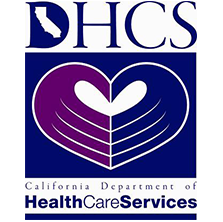A HIGHLY EFFECTIVE TOOL FOR OPIOID AND ALCOHOL ABUSE RECOVERY
Medication Assisted Treatment
Medication Assisted Treatment (MAT) is one of the most effective, evidence-based treatments available for addiction, but it’s also one of the most commonly misunderstood. Even though it’s not a good fit for everyone, it is an essential part of the comprehensive set of services for many individuals struggling with drug or alcohol addiction.WHAT IS MEDICATION ASSISTED TREATMENT?
MAT is an evidence-based treatment that uses FDA-approved prescribed medications, along with substance abuse counseling and social support, to provide a “whole person” approach to rehabilitation.
Besides the psychological addiction which develops from substance abuse, there is also a physical part. The brain changes after prolonged drug or alcohol use, so treatments are needed that target these changes. Rehab methods need to be psychologically effective, but they also must address the difficulties people have in giving up drugs or alcohol due to the neurological and physiological changes they’ve undergone.
While psychological changes can be addressed using psychosocial treatment methods, MAT can help address the difficulties from neurological and physiological changes. MAT is most effective for opioid addiction and for alcohol dependence.MEDICATIONS FOR OPIOID DEPENDENCY
Most people have heard of methadone, but in recent years buprenorphine (Suboxone® or Subutex®) and naltrexone (Vivitrol® or ReVia®) have been added as medications that are FDA-approved for treating opioid dependence and addiction to drugs such as heroin, morphine, codeine, oxycodone and hydrocodone. There is no time limit as to how long individuals will stay on MAT. Some stay in MAT for months, a few years, or the rest of their lives. Stopping MAT must always be done under the supervision of a doctor.MEDICATIONS FOR ALCOHOL DEPENDENCY
Disulfiram (Antabuse®), acamprosate (Campral®), and naltrexone (Vivitrol® or ReVia®) are the most common FDA-approved medications used to treat alcohol addiction. Although these medications aren’t a cure for alcohol use disorder (AUD), they are most effective for those who participate in a structured MAT program.Therapies Offered
History of Medication Assisted Treatment
In the early 1960s, Dr. Vincent P. Dole became interested in studying the effects of addiction. Dr. Dole then joined with Dr. Marie E. Nyswander after reading her book that put forth the idea that people struggling with opioid addiction would have to be maintained for extended periods of time on opioids to function. Dr. Nyswander pointed to the high rates of relapse in people who were addicted to opioids, because a significant number of people could not maintain sobriety despite detoxifications, residential rehab and psychotherapy.
The researchers studied the missing piece that could help people who wanted to overcome opioid addiction: short-acting medications that could help decrease anxiety, relieve withdrawal symptoms and improve social functioning.
After trying a few different types of opioids, the doctors focused on methadone. The researchers found that methadone worked especially well because research subjects didn’t feel euphoria or tranquilized, but “normal”. This meant they could work and socialize normally without the incapacitating effects of other opioids, like heroin or morphine.
Due to these positive findings, methadone was introduced into public health programs. In the 1990s and 2000s, buprenorphine and naltrexone were also studied and approved to be included in MAT programs due to their effectiveness and similar positive results to methadone.
- A controlled dose of methadone reduced or blocked the euphoric and tranquilizing effects of heroin, morphine, opium and meperidine.
- Subjects in the study didn’t build tolerance to methadone over time, where they did for other opioids. This was an important finding because it meant a constant dosage could be used for extended periods of time, in some cases for many years.
- Methadone worked well when given in an oral dose, and because it has a half-life of 24 to 36 hours, individuals could take it once a day without having to inject it.
- Methadone alleviated opioid cravings that individuals with addiction reported as a major reason why they relapsed and continued using illicit drugs.
- Methadone, unlike most opioids, produced minimal side effects. Methadone was also deemed medically safe and non-toxic.
How Does Medication Assisted Treatment Work During Detox?
Detoxification, also called detox, is the first step in drug or alcohol recovery. Your body needs time to process whatever leftover substances are circulating. This can be a time of severe cravings and withdrawal symptoms as the process moves along.
MAT during detox can help:
- Reduce uncomfortable withdrawal symptoms by using an opioid replacement drug that helps lower relapse risk during the early recovery stages.
- Relieve cravings for substances in the early recovery stages.
- Assist in a slow, controlled taper off from addictive substances so you can more easily adjust to living without drugs or alcohol.
- Provide 24/7 medical supervision during your early recovery stages, so you have healthcare professionals who can help you address triggers and stressors that can lead to relapse.

After detox, it’s important to move onto the next stage of treatment to avoid the high risk of relapse.
One study found that of the people who left detox without further treatment:
- 27% relapsed the day they were discharged
- 65% relapsed within a month of their discharge
- 90% relapsed within a year of discharge.
How Does Medication Assisted Treatment Work Within Treatment?
Once detox is completed, and the next stage of treatment has been entered, whether it is a residential or outpatient program, having medication assisted treatment as part of rehab helps with recovery. MAT drugs can stabilize and maintain commitment to abstinence throughout the journey through the later stages of recovery.
The MAT process usually includes a few steps:
INDUCTION PHASE
An induction phase that helps establish an effective medication dose. Assessments occur daily to verify there is not overmedication or undermedication, and dose adjustments are made accordingly.
STABILIZATION PHASE
A stabilization phase where the minimal dose needed to avoid withdrawal symptoms from appearing is established. At this stage, medications continue to be taken and adjusted depending upon symptoms. Psychosocial therapies are received as well.
MAINTENANCE PHASE
A maintenance or withdrawal phase from the medication, which can take place in separate phases or one phase. For some, the maintenance phase can stretch into many years.
How Does Medication Assisted Treatment Work During Aftercare?
Medication assisted treatment can help with abstinence from addictive substances while adjusting to daily life in the later stages of treatment. Outpatient services are typically part of an aftercare plan, and MAT in the maintenance phase can help prevent relapse.
Outpatient Services:
- If methadone is part of your MAT aftercare plan, visiting a clinic occurs on a regular schedule to receive medication.
- If you’re going to use buprenorphine as your maintenance drug for MAT, it’s an office-based medication that stops the effects of other narcotics and reduces withdrawal risks. A prescription is received for either a daily tablet, a film that’s placed inside the cheek, or an implant under the skin that lasts about six months.
- If naltrexone will be used as part of your aftercare plan to block the rewarding effects of other narcotics or alcohol, it’s also an office-based visit where a daily pill or monthly injection is prescribed.
- If disulfiram (Antabuse®) is used to treat alcohol abuse, it will be part of your aftercare program to prevent drinking. If you take Antabuse® and drink alcohol, you’ll have a reaction that includes vomiting, dizziness, anxiety and cardiovascular effects.
- If acamprosate (Campral®) is part of your AUD aftercare plan, it will help with maintaining abstinence from drinking by relieving some negative symptoms of long-term sobriety. Acamprosate is a pill that is taken three times daily.
Evidence of the Effectiveness of Medication Assisted Treatment
Research has provided evidence that demonstrates medication assisted treatment can reduce opioid-related overdose deaths, keep people in treatment longer and help opioid-dependent pregnant women have better outcomes.
The National Institute on Drug Abuse (NIDA) reports:
- MAT reduces opioid use and overdose deaths due to illicit opioid use. A survey in Baltimore determined that after buprenorphine was provided, heroin overdose deaths went down by 37%.9
- Individuals in MAT programs were more likely to stay in therapy compared to people receiving treatment that didn’t include MAT.
- Opioid-dependent pregnant women treated with methadone or buprenorphine showed improved outcomes for their babies. Also, MAT reduced the symptoms of neonatal abstinence syndrome and shortened hospital stays.
Misconceptions Regarding Medication Assisted Treatment
A common misconception tied to medication assisted treatment is that it simply substitutes one addiction for another, which leaves individuals in the same place where they started. Instead, MAT medications relieve withdrawal symptoms and psychological cravings that can trigger chemical imbalances in the brain and body while providing no euphoric effects. MAT provides safe, controlled medication levels to help a person overcome abusing opioids. In addition, research studies have shown that when medications are provided at the proper doses, the drugs used in MAT have no harmful effects on a person’s intellect, mental capabilities or physical functioning.
Another misconception is that MAT medications can be diverted (when prescription medicines are obtained or used illegally) adding to the stream of illegally obtained drugs. In fact, NIDA reports that the diversion of buprenorphine is uncommon, and when people do obtain it via diversion, they’re doing it to manage withdrawal. Prescription pain reliever diversions, including oxycodone and hydrocodone, happens far more frequently. In 2014, buprenorphine made up less than 1% of all diversions in the United States.
https://www.samhsa.gov/medication-assisted-treatment
https://www.ncbi.nlm.nih.gov/books/NBK64157/
https://www.ncbi.nlm.nih.gov/pmc/articles/PMC2851054/
https://www.ncbi.nlm.nih.gov/pmc/articles/PMC4874241/
https://www.ncbi.nlm.nih.gov/books/NBK64165/
https://alcoholtreatment.niaaa.nih.gov/FAQs-searching-alcohol-treatment#topic-what-medications-treat-aud
https://www.ncbi.nlm.nih.gov/pmc/articles/PMC4924115/
https://www.drugabuse.gov/publications/effective-treatments-opioid-addiction/effective-treatments-opioid-addiction
SAFE HARBOR TREATMENT CENTER
Where Can I Find Medication Assisted Treatment?
For more than 25 years, Safe Harbor Treatment Center in Costa Mesa, California has been serving the needs of those who need evidence-based treatment for addiction, including medication assisted treatment. Safe Harbor Treatment Center offers a sub-acute residential detox, addiction treatment programs for women, as well as intensive outpatient services (IOP).
Our state licensed beds provide the services needed for a safe detoxification from addictive substances. Our facility also provides a safe space for women to build empowering relationships with one another, construct a support system, develop meaningful friendships and explore gender-specific issues in an understanding and compassionate environment. Safe Harbor also partners with local intensive outpatient services for women suffering from addiction and trauma.
Contact us to speak with our Admissions Department. Our specialists are compassionate and patient, because we understand the stress and suffering you or a loved one can be experiencing. We’re here to help.




